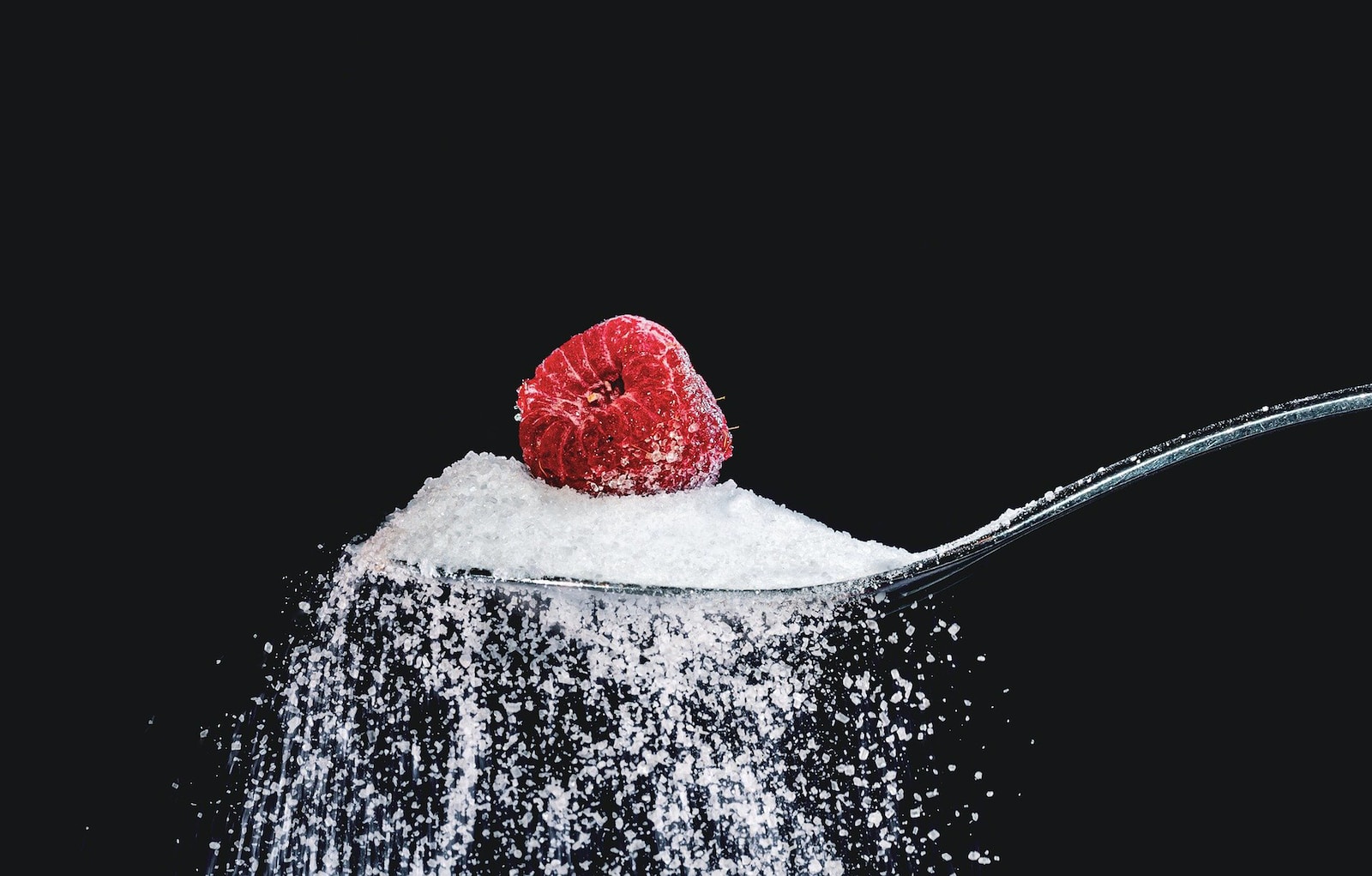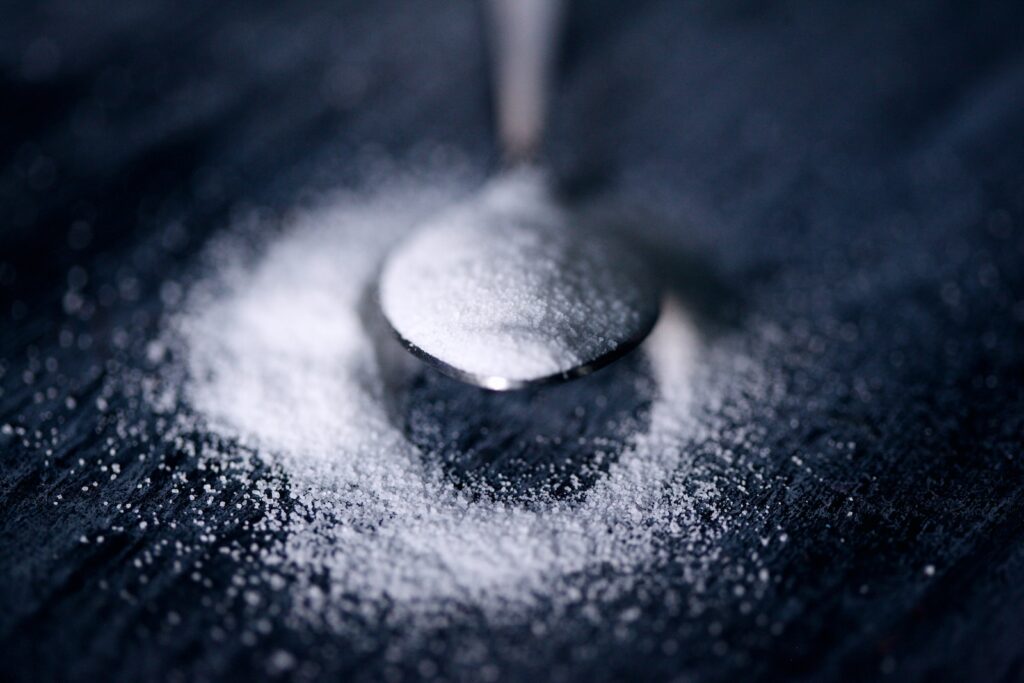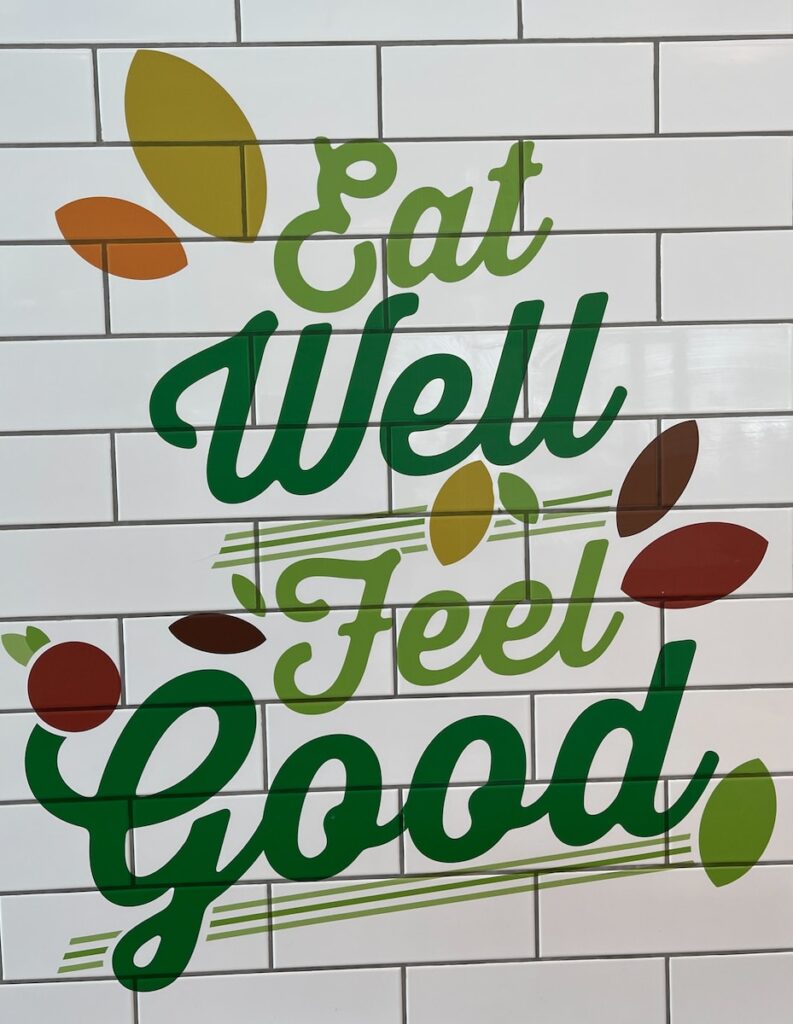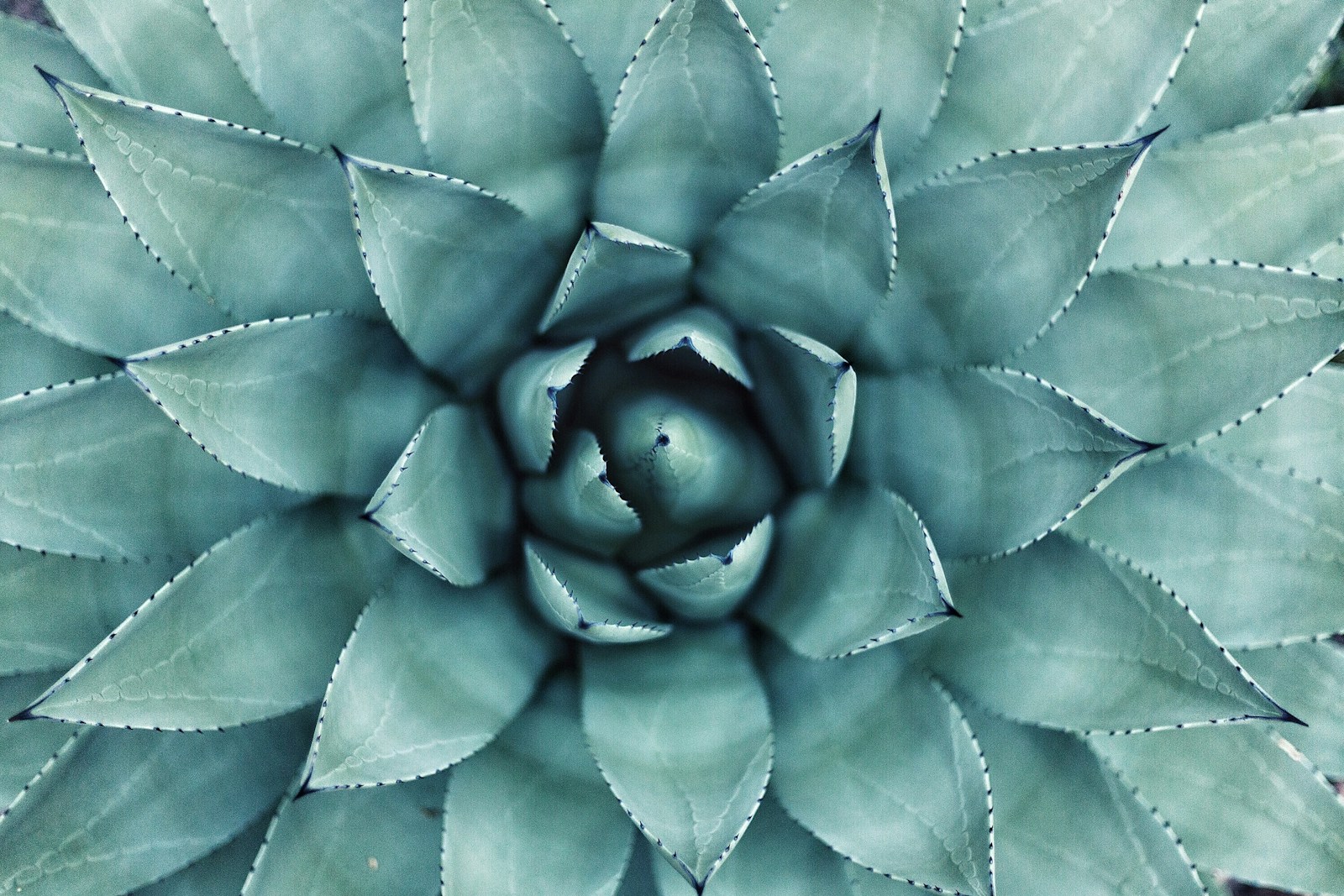
The Hidden Risks of Sucralose: Unraveling the Dangers
Table of Contents

Let’s talk about what you may not know about the risks of sucralose. In today’s health-conscious world, we often turn to sugar substitutes to help reduce our sugar intake and maintain a healthier lifestyle but it’s important to know exactly what you are putting into your body.
Sucralose, a widely used artificial sweetener, has become a popular choice for those seeking a sugar alternative. But, if you look deeper into the world of sucralose, it’s easy to understand that not all that glitters is gold. In this blog post, we explore the research on the potential dangers and health risks associated with consuming sucralose, and shed some light on the hidden risks.
What is Sucralose?
Sucralose is a chemically derived sugar substitute that has gained popularity in the food industry for its intense sweetness without the added calories. It’s commonly found in a wide range of products, from diet sodas to sugar-free snacks. Understanding its origins and how it is used is crucial to uncovering its potential dangers.
Sucralose is an artificial sweetener that is used as a sugar substitute. It is a chlorinated derivative of sucrose, which is a natural sugar found in sugar cane and sugar beets. The chemical structure of sucralose is modified in a way that makes it intensely sweet but non-caloric, which is why it is used in various food and beverage products as a sugar alternative.
Sucralose is approximately 600 times sweeter than sucrose (table sugar), so only a tiny amount is needed to provide the same level of sweetness. It is not metabolized by the body, meaning it passes through the digestive system without being absorbed, and it is excreted in the urine unchanged. This lack of metabolism is why it is considered non-caloric and does not significantly affect blood sugar levels.
Due to its sweetness and lack of calories, sucralose is commonly used in a wide range of products, including sugar-free and “diet” foods, beverages, and as a tabletop sweetener. It has been approved for use by various food safety authorities, including the U.S. Food and Drug Administration (FDA), and is considered safe for most people when consumed within acceptable daily intake levels. However, there are ongoing debates and concerns about its long-term health effects, which is why some individuals choose to limit their consumption or explore alternative sweeteners.
The Controversy Surrounding Sucralose
The approval and regulation of sucralose by the FDA has been a subject of debate. While many consider it safe, others have raised concerns about its potential health risks with research supporting these risks.

The Health Risks
Sucralose has been associated with several health risks, including:
A. Gastrointestinal Issues
- Digestive disturbances.
- A potential link to an altered gut microbiome.
The impact of sucralose on the gut microbiome is a subject of ongoing research, and the findings are not entirely conclusive. Some studies have suggested that sucralose may influence the gut microbiome, while others have not found significant effects. Here are some key findings and considerations:
Alterations in Gut Bacteria: Some animal studies have reported that sucralose consumption can lead to changes in the composition of gut bacteria. Specifically, sucralose intake has been associated with a decrease in beneficial gut bacteria and an increase in bacteria associated with metabolic disturbances. These changes could have potential implications for overall health.
B. Impact on Blood Sugar and Insulin
- Studies on sucralose and insulin response.
- Implications for weight management.
Appetite and Cravings: Some studies suggest that sucralose may not satisfy the body’s sweet cravings in the same way that natural sugars do. This could potentially lead to overeating or increased cravings for sweet and high-calorie foods, which could, in turn, affect weight management.
C. Neurological Concerns
There has been ongoing research into the potential neurological effects of sucralose, a zero-calorie artificial sweetener. While sucralose is generally recognized as safe by regulatory agencies like the U.S. Food and Drug Administration (FDA) and the European Food Safety Authority (EFSA), some studies and anecdotal reports have raised concerns about its impact on the nervous system.
Here are some potential neurological effects and considerations associated with sucralose:
Headaches and Migraines: Some individuals have reported experiencing headaches and migraines after consuming products containing sucralose. However, not all people are affected, and the exact mechanisms behind this effect are not well understood.
Altered Taste Perception: Sucralose is much sweeter than sugar, and its intense sweetness can lead to a shift in taste perception. Some people have reported that using artificial sweeteners like sucralose can make them more inclined to choose sweeter foods and beverages, potentially affecting their overall diet and preferences.
Effects on Dopamine Release: Some animal studies have suggested that sucralose may influence the release of dopamine in the brain, which is associated with the reward system and can potentially affect eating behaviors and food choices. However, the translation of these findings to humans is not yet clear.
Potential for Neurological Symptoms: There have been anecdotal reports of various neurological symptoms, such as dizziness, numbness, and tingling, that some individuals attribute to the consumption of sucralose. However, these reports are often limited and have not been consistently linked to sucralose in scientific research.
Individual Variability: As with other potential effects of sucralose, the neurological response can vary from person to person. What affects one individual may not affect another.
It’s important to note that the scientific evidence regarding the neurological effects of sucralose is not as well-established as its safety in terms of general consumption. Regulatory agencies have set acceptable daily intake levels for sucralose based on extensive toxicological and safety studies. These levels are considered safe for the general population.
Long-Term Health Implications
With limited long-term studies available, we can only speculate about potential long-term health risks, including the possibility of carcinogenicity.
Consider Alternatives to Sucralose
For those looking to reduce their sugar intake without the risks associated with sucralose, there are alternatives.
Safe Alternatives Include Some of the Following
- Monk Fruit Extract: Monk fruit, also known as Luo Han Guo, is a natural sweetener that is much sweeter than sugar and has no calories.
- Erythritol: Erythritol is a sugar alcohol that is naturally occurring in some fruits and fermented foods. It has about 70% of the sweetness of sugar with very few calories.
- Xylitol: Xylitol is another sugar alcohol, often used as a sugar substitute in sugar-free gum and dental products.
- Allulose: Allulose is a low-calorie sugar that is found naturally in small quantities in certain foods. It has a taste and texture similar to sugar.
- Coconut Sugar: Coconut sugar is derived from the sap of coconut palm trees. It is considered a more natural sweetener with a lower glycemic index than regular sugar.
- Maple Syrup: While not a calorie-free alternative, pure maple syrup is a natural sweetener that can be used in moderation as a substitute for sugar.
- Honey: Honey is a natural sweetener and can be used as a sugar substitute, although it has calories and a distinct flavor.
- Agave Nectar: Agave nectar is a sweet syrup derived from the agave plant and is often used in place of sugar in recipes.
- Date Paste: Date paste is made by blending dates with water, creating a natural sweetener that can be used as a sugar substitute in baking.
- Fruit Puree: Mashed bananas, applesauce, and other fruit purees can be used to replace sugar in some recipes.
- Molasses: While still a sugar product, unsulfured molasses can be used in moderation as a sugar substitute, adding a rich, caramel-like flavor.
How to Read Food Labels

To make informed food choices, it’s essential to know how to identify sucralose in products and understand its presence in your diet.
Check the Ingredients List
Start by looking at the list of ingredients on the food label. Ingredients are usually listed in descending order of quantity, so the first ingredient is the most abundant, and the last ingredient is the least abundant.
Look for the Word “Sucralose”
Scan the ingredients list for the term “sucralose.” Sucralose is the chemical name for this artificial sweetener. It may also be listed by its brand name, Splenda.
Pay Attention to Other Sweeteners
Some products may use a combination of sweeteners, so check for other artificial sweeteners like aspartame, acesulfame potassium (Ace-K), or saccharin. These can be listed alongside or in addition to sucralose.
Watch for Abbreviations
Occasionally, you might see an abbreviation or code for sucralose, such as “E955” or “955.” These codes are used in some countries to represent food additives, and E955 corresponds to sucralose.
Be Cautious with Generic Terms
In some cases, you might not see “sucralose” explicitly mentioned but rather generic terms like “artificial sweetener” or “low-calorie sweetener.” In such instances, you can contact the manufacturer or look up the product online for more information.
Check for allergens and special diet information
Some food labels also provide information on common allergens, such as “contains milk” or “contains soy.” If you have dietary restrictions or allergies, be sure to check these sections of the label as well.
Review the Nutrition Facts
The Nutrition Facts panel on the food label will tell you the amount of sugar in the product. If you see a low amount of sugar, but the ingredient list doesn’t include sucralose, it’s possible that sucralose is used as a sugar substitute.
Keep in mind that sucralose is often used in sugar-free or “diet” products, as it provides sweetness without adding calories. If you’re specifically looking to avoid sucralose, thorough label reading is important.
Additionally, always check the label on each specific product, as ingredients can vary between brands and product lines.
Conclusion
It’s essential to remember to make informed choices and to always research what you are putting into your body in order to make safe and informed choices. Sucralose may not be the best option for everyone, and there are alternatives you may want to consider.
By being aware of the potential risks and making thoughtful decisions, you can find the sweet spot for your sugar intake while safeguarding your health.
You May Also Enjoy
11 Best Lab Values For Longevity



